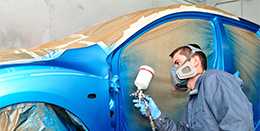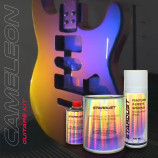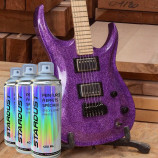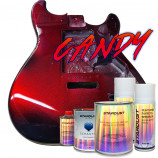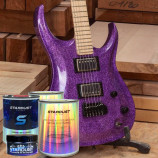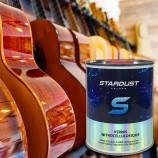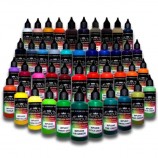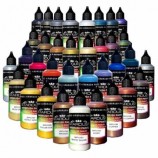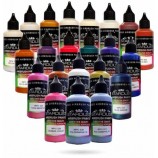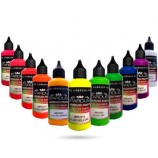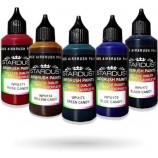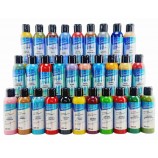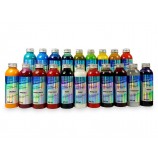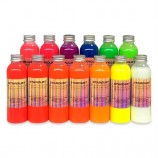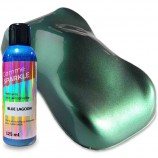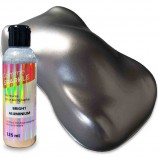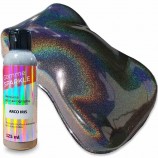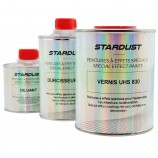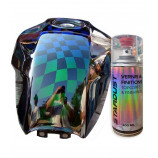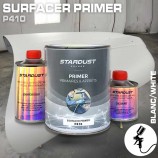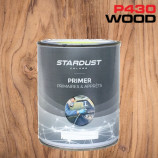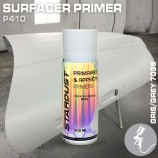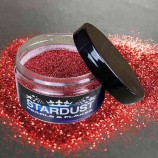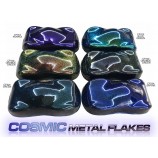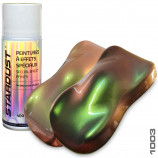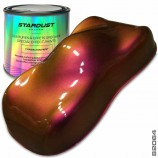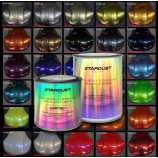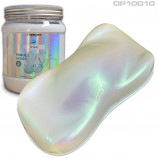Check out our link to the full Guitar Paint Tutorial below! What paints do you think can be applied to a guitar and what guitar paints are being selected more and more by lute-making and musical instrument paint manufacturers in 2020 ?
Paints (and in other fields as well), lacquers, varnishes are made of resins, and for the last 100 years, glycerol, cellulosic, vinyl, and then acrylics have been used in chronological order.
Today, whatever the field, it is the polyurethane acrylics that give the best performance in terms of gloss, protection, durability... Let us advise you and help you discover the best possibilities for your guitar painting project.
In the field of instruments, guitar, piano, violin, etc., we have benefited less from coating innovations than in the automotive field, often because of the belief that the "good old" paints gave a particular sound.
If we leave beliefs aside, we should rely on a few facts only: the dry paint film must be compatible with the support, it must be flexible and respect a certain thickness so as not to alter the vibration and it must be as bright and durable as possible.
Which guitar paint to choose?
It's a misconception to think that body paint is for the body. You can find the same paint on a pair of glasses, a wooden boat dashboard, or even a pair of boots.
Today, acrylic is the best choice, because it is easy to dry and harden in the air, very resistant and shiny, and non-yellowing!
Then, depending on your preference, you can use a water-based acrylic (there are impregnating primers for wood, lacquers and water-based varnishes for wood) or a solvent-based acrylic (like on cars!) and in the latter case, you get a guitar paint with an impressive surface shine and effect.
Among the different steps that can intervene in the painting of a classic or modern guitar (Discover our complete tutorial in the following paragraph), there is the impregnation of the wood, the primer, there is the paint, the color, the effect and there is the varnish in all cases.
Just remember that with water or solvent, you can literally apply any guitar paint (glitter, chameleon, phosphorescent, even the craziest ones), once this guitar is primed.
Applying paint to a guitar
Whether it's a renovation with a varnish, a stain to enhance and highlight the wood grain or a customization project, you can learn the basics of how to apply the steps and products with our blog post about applying paint to a guitar.
Painting a guitar can be done with a brush, an airbrush, a spray gun or even an aerosol can. You should know that all the effect paints shown on our site are applicable on a guitar.
The varnishing of the guitars
Whether we are talking about a classical wooden guitar, for which we wish to keep the authentic character, or whether we are talking about an electric guitar, we necessarily need to varnish a guitar, in order to protect the wood or to protect the paint.
Varnishing is a protective coat, which also has a major aesthetic role, as it is the glossy (or matte) finishing coat that will accentuate the colors, depth, veins and patterns of the wood.
Stardust offers water-based varnishes, body varnishes and epoxy glazes. These are three solutions that you cannot fail to consider!







